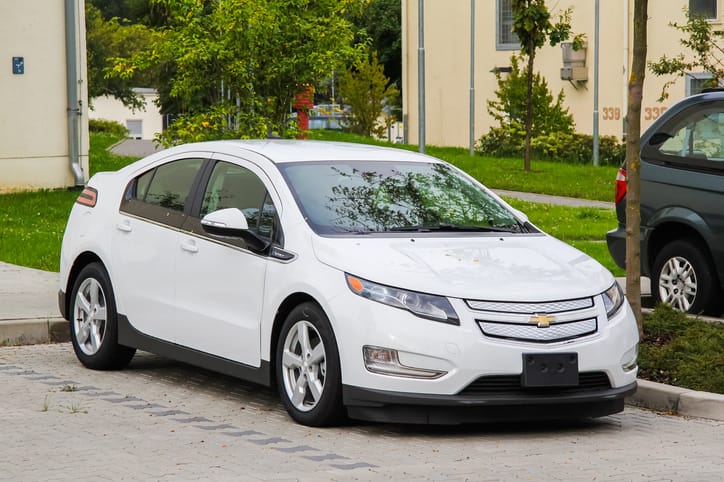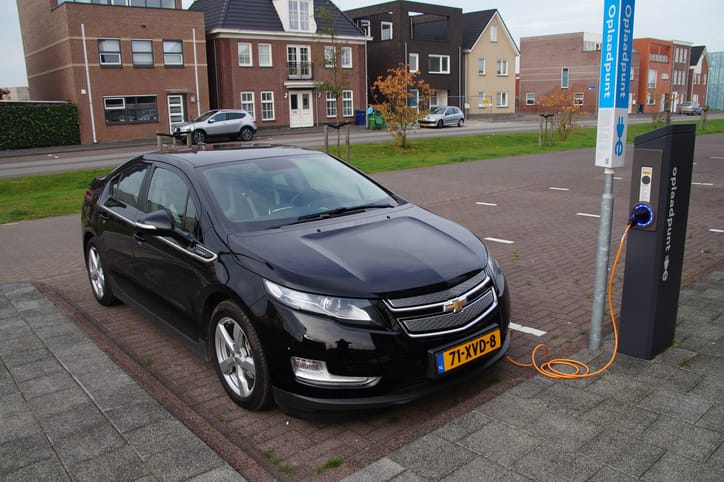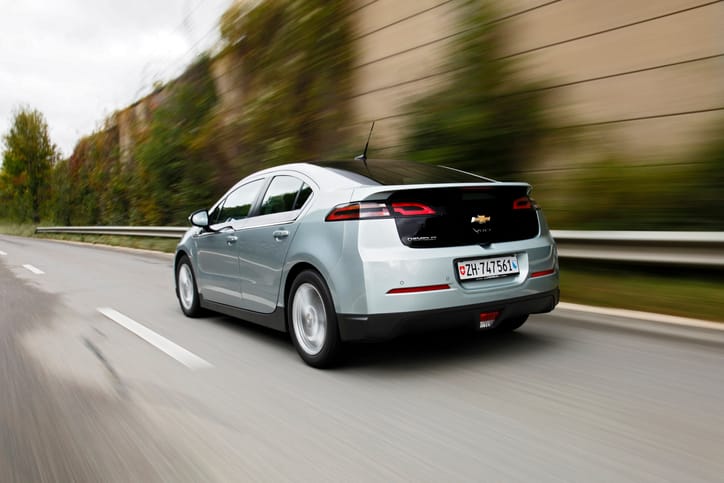The Chevrolet Volt: A Pioneering Plug-in Hybrid

The Chevrolet Volt stands out as a groundbreaking vehicle in the automotive industry. Introduced in 2010, this plug-in hybrid car offered a revolutionary approach to electric mobility by bridging the gap between purely electric vehicles and traditional gasoline-powered cars. Let's delve into the details of the Chevrolet Volt, exploring its innovative technology, practical applications, and lasting impact on the electric car landscape.
A Marriage of Electric and Gasoline: Plug-in Hybrid Technology
The Chevrolet Volt's defining characteristic lies in its plug-in hybrid technology. Unlike conventional hybrids that rely solely on a gasoline engine and an electric motor working in tandem, the Volt prioritizes electric propulsion. The car is equipped with a battery pack that can be charged using a plug-in connection, similar to a fully electric vehicle. This allows drivers to complete daily commutes and errands on electric power alone, offering significant fuel economy and reduced emissions.

However, the Volt doesn't come to a halt when the battery depletes. It boasts a range-extending gasoline engine. This engine doesn't directly power the wheels; instead, it functions as a generator, kicking in to recharge the battery on the go. This ingenious system ensures the Volt maintains extended driving range, eliminating the "range anxiety" that can be a concern with purely electric cars.
Generations of Innovation: The Evolution of the Chevrolet Volt
The Chevrolet Volt saw two distinct generations throughout its production run, each offering advancements in technology and design.
- First Generation (2010-2015): The original Chevrolet Volt introduced the world to the concept of a plug-in hybrid with extended range. It boasted an electric driving range of around 50 miles (80 km) and a total driving range exceeding 400 miles (640 km) with the assistance of the gasoline engine. This generation sported a distinctive design with a sloping roofline and a futuristic aesthetic.
- Second Generation (2016-2019): Unveiled in 2015, the second-generation Volt presented a more refined driving experience with a sleeker design, improved cabin space, and a longer electric driving range of approximately 53 miles (85 km). The overall driving range remained similar to the first generation.
Both generations of the Chevrolet Volt offered various trim levels with additional features and amenities.
Practical Applications: Who Was the Chevrolet Volt For?
The Chevrolet Volt catered to a specific segment of drivers seeking the benefits of electric mobility without the limitations of purely electric cars at the time. It was ideal for those who conducted most of their daily driving within the electric range but still desired the security of a gasoline engine for longer trips or unforeseen circumstances.
The Volt appealed to environmentally conscious drivers who wanted to reduce their dependence on fossil fuels. Additionally, the car offered significant fuel cost savings compared to traditional gasoline-powered vehicles, making it attractive to budget-minded consumers.
Impact and Legacy: A Pioneering Spark in the Electric Revolution
The Chevrolet Volt's significance goes beyond its role as a practical and efficient car. It served as a stepping stone in the electric car revolution, paving the way for a wider acceptance of plug-in hybrid technology. Here's how the Volt left its mark:
- Public Perception: The Volt helped raise public awareness of electric vehicles and addressed range anxiety concerns that initially deterred potential buyers. By showcasing the benefits of electric propulsion with a gasoline safety net, the Volt encouraged more people to consider hybrid options.
- Technological Innovation: The development of the Volt's plug-in hybrid system spurred advancements in battery technology, electric motor efficiency, and range extenders. These advancements have benefited not only future generations of the Volt but also the broader electric car industry.
- Manufacturer Inspiration: The success of the Volt motivated other car manufacturers to invest in plug-in hybrid technology. This healthy competition has accelerated the development of more efficient and affordable hybrid options for consumers.
While Chevrolet discontinued production of the Volt in 2019, its legacy lives on. The knowledge and experience gained through the Volt program are directly incorporated into Chevrolet's current electric vehicle offerings, such as the Bolt EV and Bolt EUV.

Conclusion: A Pioneering Chapter in Electric Mobility
The Chevrolet Volt stands as a testament to human ingenuity in the quest for sustainable transportation. It offered a glimpse into the future of electric mobility, combining the efficiency of electric propulsion with the practicality of a gasoline engine. Although its production has ceased, the Volt's impact on the automotive industry is undeniable. It served as a catalyst for technological advancements, public education, and a wider adoption of electric vehicles. The Volt's pioneering spirit continues to inspire the ongoing development of cleaner, more efficient, and accessible electric cars for a greener future.
